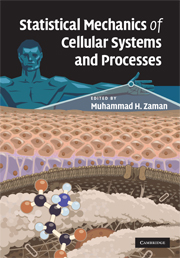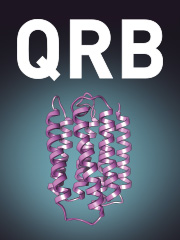Cellular Biophysics and Modeling
What every neuroscientist should know about the mathematical modeling of excitable cells. Combining empirical physiology and nonlinear dynamics, this text provides an introduction to the simulation and modeling of dynamic phenomena in cell biology and neuroscience. It introduces mathematical modeling techniques alongside cellular electrophysiology. Topics include membrane transport and diffusion, the biophysics of excitable membranes, the gating of voltage and ligand-gated ion channels, intracellular calcium signalling, and electrical bursting in neurons and other excitable cell types. It introduces mathematical modeling techniques such as ordinary differential equations, phase plane, and bifurcation analysis of single-compartment neuron models. With analytical and computational problem sets, this book is suitable for life sciences majors, in biology to neuroscience, with one year of calculus, as well as graduate students looking for a primer on membrane excitability and calcium signalling.
- The seamless integration of empirical and mathematical tools, and their introduction in a familiar biological context, enables students to appreciate the significance and utility of these tools
- Includes numerous illustrations focused on graphical aspects of modelling and encourages a hands-on, problem solving approach through both pencil and paper analysis and user-friendly computational assignments
- Provides mathematics instruction at a basic level appropriate for undergraduate life science majors with one year of calculus, but with an accompanying depth of knowledge and relevance to biology
Reviews & endorsements
'In this text, Conradi Smith does an excellent job of teaching students with no mathematical training beyond calculus how to use differential equations to understand the basic principles of cell physiology and excitability. He skilfully walks students through the steps of modeling and analysis, all the while working to develop intuition and insight into how things work. His emphasis on computational methods for solution as well as graphical and geometrical means for interpretation enables him to communicate complex ideas in understandable ways. Furthermore, his patience and attention to detail will be appreciated by those students who have not had extensive exposure to the art of mathematical modeling. This text is a wonderful addition to the mathematical biology textbook literature.' James P. Keener, University of Utah
Product details
No date availablePaperback
9780521183055
394 pages
246 × 174 × 20 mm
0.78kg
21 b/w illus. 248 colour illus. 6 tables
Table of Contents
- 1. Introduction
- Part I. Models and Odes:
- 2. Compartmental modeling
- 3. Phase diagrams
- 4. Ligands, receptors and rate laws
- 5. Function families and characteristic times
- 6. Bifurcation diagrams of scalar ODEs
- Part II. Passive Membranes:
- 7. The Nernst equilibrium potential
- 8. The current balance equation
- 9. GHK theory of membrane permeation
- Part III. Voltage-Gated Currents:
- 10. Voltage-gated ionic currents
- 11. Regenerative ionic currents and bistability
- 12. Voltage-clamp recording
- 13. Hodgkin-Huxley model of the action potential
- Part IV. Excitability and Phase Planes:
- 14. The Morris-Lecar model
- 15. Phase plane analysis
- 16. Linear stability analysis
- Part V. Oscillations and Bursting:
- 17. Type II excitability and oscillations
- 18. Type I excitability and oscillations
- 19. The low-threshold calcium spike
- 20. Synaptic currents.







